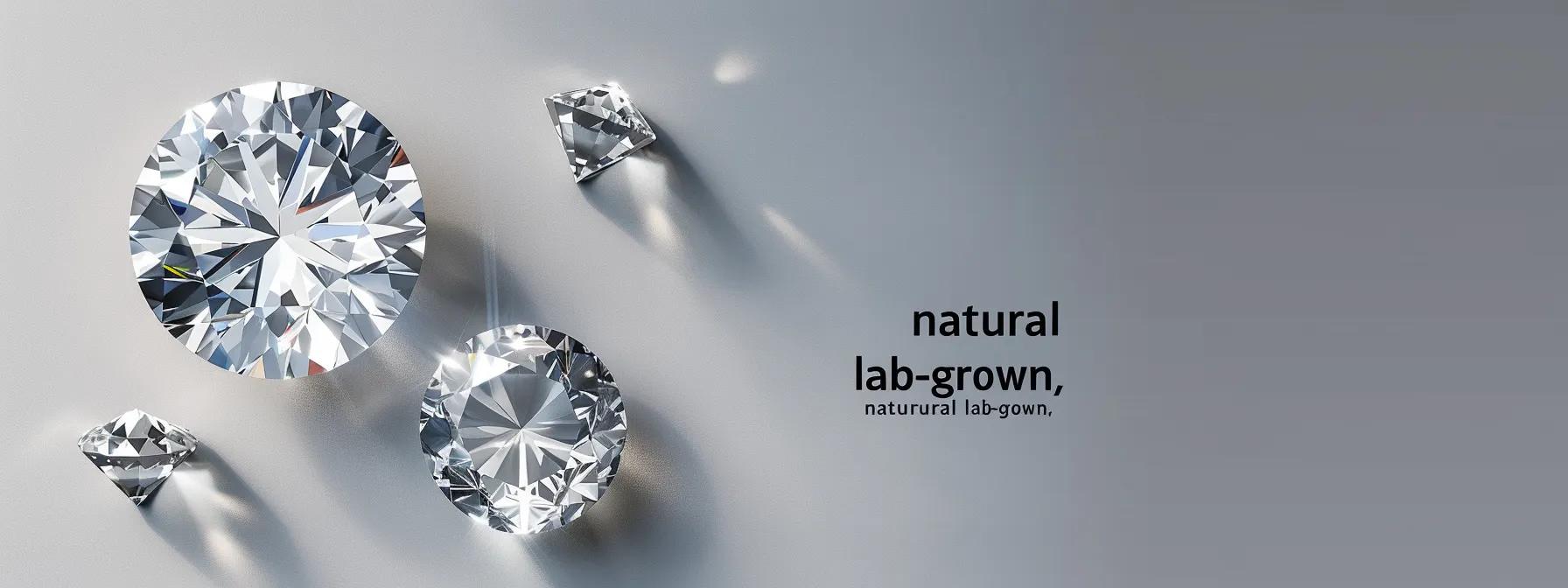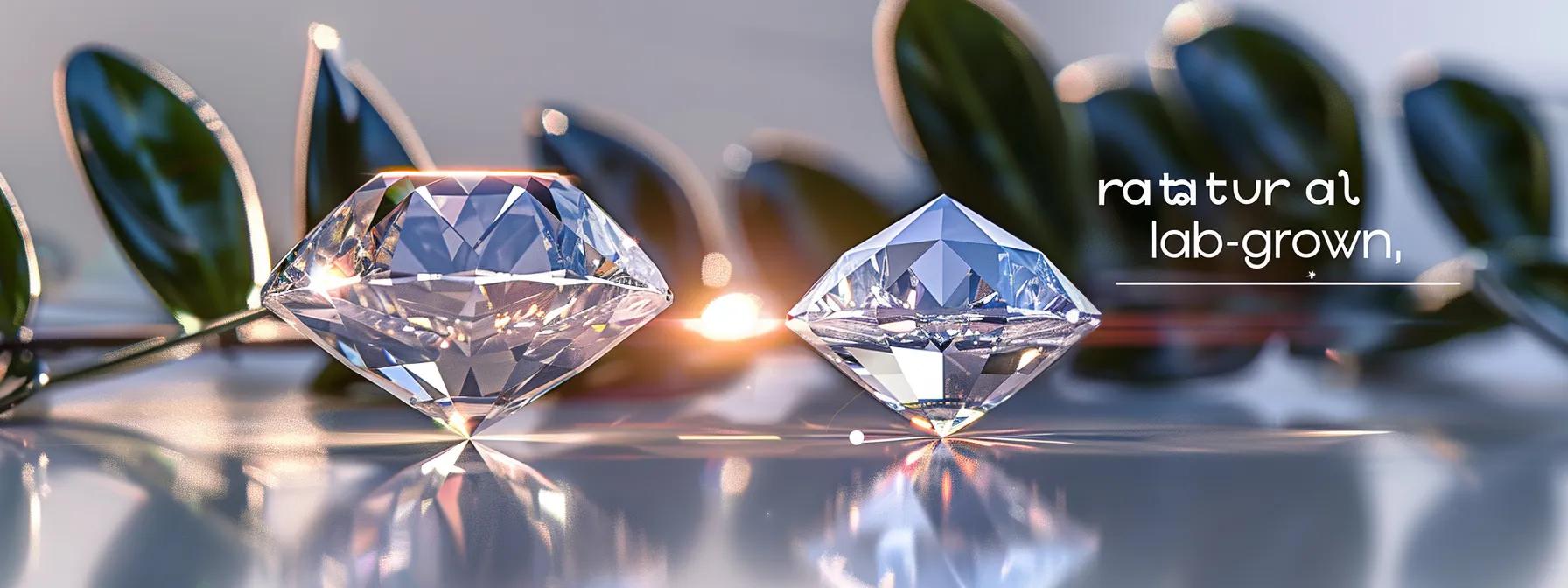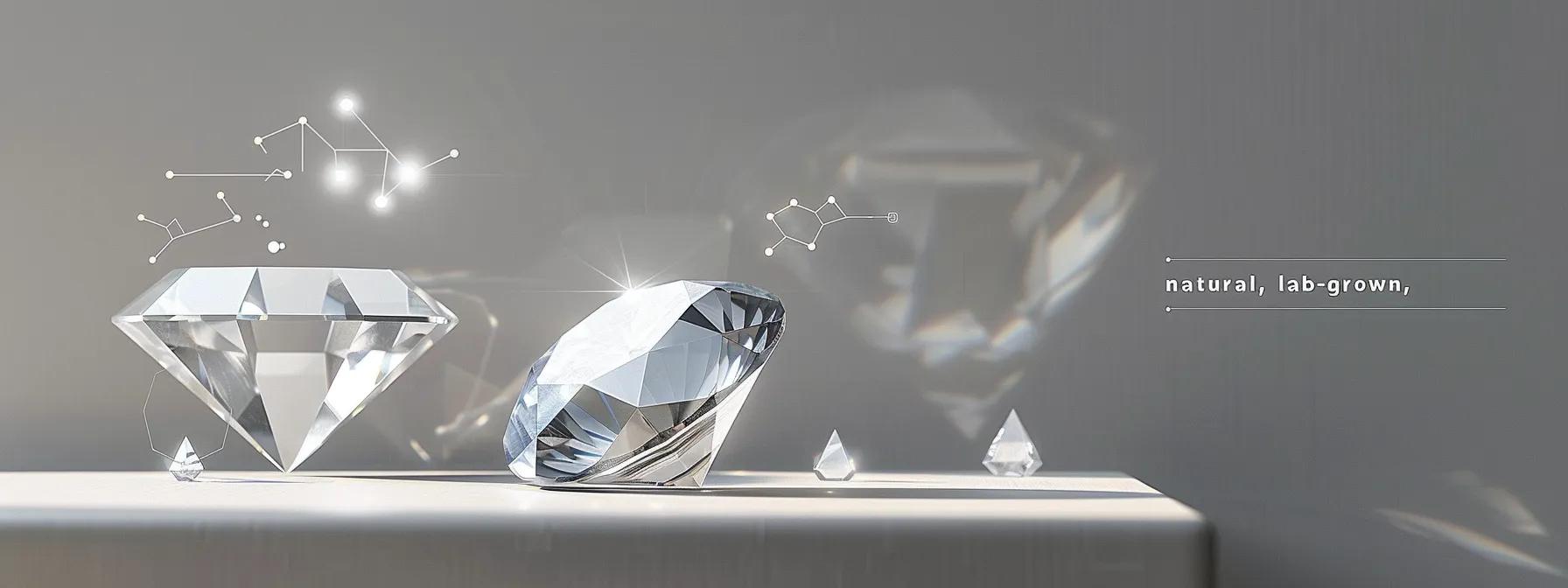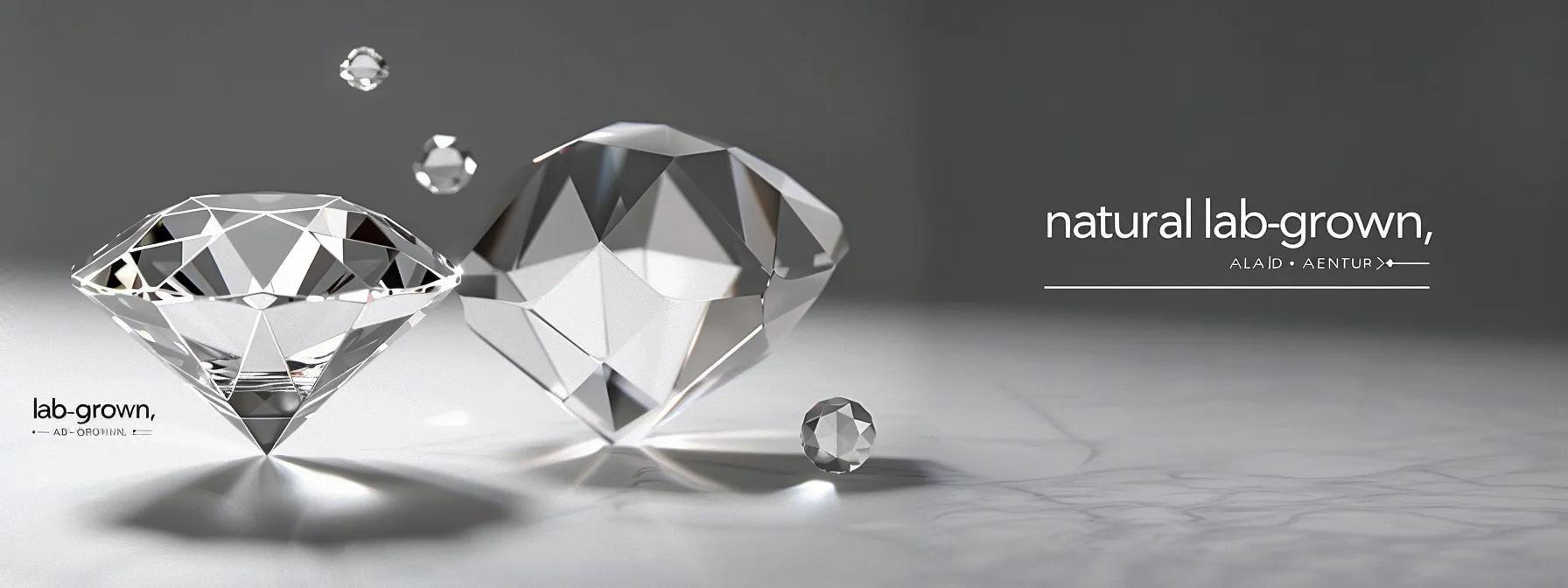
Table Of Contents:
- How to Tell if a Diamond Is a Lab Diamond: Complete Guide to Identification and Certification
- What Are Lab Diamonds and How Do They Differ From Natural Diamonds?
- How Can You Use Certification to Identify a Lab Diamond?
- How Does Laser Inscription Help Confirm a Lab Diamond?
- How Does Price Indicate Whether a Diamond Is Lab Grown?
- What Are the Ethical and Environmental Benefits of Lab Diamonds?
- How Do the 4Cs Help Identify Lab Diamonds?
- When Should You Consult a Gemologist to Verify a Lab Diamond?
- Frequently Asked Questions
- Final Thoughts
How to Tell if a Diamond Is a Lab Diamond: Complete Guide to Identification and Certification
In recent years, lab diamonds have become popular with consumers seeking ethically sourced and environmentally sustainable alternatives. As lab grown diamonds enter the market, it is essential to differentiate them from natural diamonds. This guide explains formation processes, visual and certification differences, and advanced identification techniques such as laser inscription and the 4Cs, serving as a critical resource for buyers who want to ensure authenticity and quality.
What Are Lab Diamonds and How Do They Differ From Natural Diamonds?
Lab diamonds, also known as lab grown or synthetic diamonds, are created in controlled environments that simulate the natural formation of diamonds in the Earth’s mantle. Unlike natural diamonds, which form over billions of years under high pressure and temperature, lab diamonds are manufactured rapidly using methods such as chemical vapor deposition (CVD) or high-pressure high-temperature (HPHT) processing.
What Is a Lab Grown Diamond?
Lab grown diamonds are produced in advanced facilities with precise control over physical and chemical parameters. The process yields a diamond that is chemically, physically, and optically identical to a natural diamond. Thanks to refined growth methods, lab diamonds often have fewer impurities, resulting in enhanced clarity and performance. This controlled process also allows customization of diamond properties such as color and clarity to meet market demand while reducing the environmental impact compared to traditional mining. synthetic diamond
How Are Natural Diamonds Formed?
Natural diamonds form under extreme conditions deep within the Earth’s mantle, roughly 140 to 190 kilometers below the surface. Over billions of years, high pressure, intense heat, and carbon-rich minerals combine to create diamond crystals. Volcanic eruptions then bring these crystals to the surface via kimberlite pipes. The lengthy natural process results in unique inclusions, colors, and microscopic imperfections—a “fingerprint” that gemologists can study to confirm authenticity.
What Visual Differences Can Help Identify Lab Diamonds?
Several visual indicators help identify lab diamonds. Under magnification with a loupe or microscope, lab diamonds often display uniform inclusions or growth patterns that differ subtly from the random formations seen in natural stones. Some laboratory treatments may also leave behind traces identifiable by trained gemologists. Advanced imaging and spectroscopic analyses can highlight differences in fluorescence and light dispersion. Such tools, along with digital imaging to capture minute symmetry imperfections and internal graining, help distinguish synthetic diamond from natural ones.
How Do Lab Diamonds Compare to Diamond Simulants?
It is important not to confuse lab grown diamonds with diamond simulants like cubic zirconia or moissanite. Lab diamonds have the same physical attributes as natural diamonds, including a Mohs hardness rating of 10, similar refractive index, and thermal conductivity. In contrast, diamond simulants mimic appearance at a lower price point, lacking the true chemical structure and durability of actual diamonds. Though simulants may appear similar to an untrained eye, detailed gemological testing can reveal differences in light performance, crystal structure, and dispersion.
How Can You Use Certification to Identify a Lab Diamond?

Certification is vital for identifying whether a diamond is lab grown. Gemological laboratories produce grading reports for both natural and lab grown diamonds, detailing clarity, color, carat weight, and cut. Reputed institutions such as the Gemological Institute of America (GIA) and the International Gemological Institute (IGI) issue these certificates, which also state the diamond’s origin and key performance attributes.
What Is the Role of GIA and IGI in Lab Diamond Certification?
GIA and IGI are trusted authorities that conduct diamond analysis and certification. For lab diamonds, these institutions specify the stone’s origin by indicating it is"lab grown,""synthetic," or"engineered." Their rigorous testing protocols—measuring refractive index, light performance, and fluorescence—provide buyers with confidence in the diamond’s quality and authenticity, while also differentiating high-quality synthetic diamond s from lower-grade stones.
How Do You Read a Lab Diamond Certificate?
A lab diamond certificate includes the diamond’s carat weight, cut grade, color grade, and clarity grade—the well-known 4Cs. Additionally, these reports often note the stone’s origin and any treatments or enhancements applied. Buyers should review the “Origin” or “Type” section to verify if the diamond is synthetic diamond. Technical details from spectroscopic tests or laser inscription confirmations further support the certificate’s authenticity and help consumers make informed purchasing decisions.
What Are Common Features of Lab Diamond Grading Reports?
Grading reports for lab diamonds typically list dimensions, fluorescence, and symmetry details, often illustrated with proportion diagrams to assess light performance. They note the presence or absence of inclusions and describe internal graining. Frequently, the report confirms that the diamond was produced through chemical vapor deposition or HPHT methods. This comprehensive documentation enables effective comparison between lab grown and natural diamonds.
How Important Is Certification for Lab Diamonds?
Certification guarantees transparency, quality, and authenticity. It serves as an objective measure to avoid misrepresentation and confirms that the diamond meets industry standards. In a market increasingly influenced by ethical sourcing and sustainable production, certificates from trusted institutions like gemological institute of america or IGI are crucial for making informed investments.
How Does Laser Inscription Help Confirm a Lab Diamond?
Laser inscription involves etching a unique identification code or serial number on a diamond’s surface, usually on the pavilion, to provide an additional layer of verification for its origin and certification.
What Is Laser Inscription on Diamonds?
Laser inscription uses a controlled laser to engrave a unique code on the diamond. In lab grown diamonds, the inscription often includes the manufacturer’s ID, a serial number, or the diamond’s certification number. This nearly invisible code does not affect the diamond’s appearance or performance, yet it offers a permanent, tamper-proof method to trace the diamond’s origin.
How to Check for Laser Inscriptions on a Diamond?
Laser inscriptions can be viewed using a jeweler’s loupe or microscope by examining the diamond’s pavilion or girdle. Gemologists inspect the stone from various angles to locate the inscription and verify it against the certificate details. Online databases may also help confirm the inscription with the issuing laboratory’s records, ensuring authenticity during high-value purchases.
Can Laser Inscriptions Distinguish Lab Diamonds From Natural Ones?
Although laser inscriptions are not exclusive to lab diamonds, the information they contain can indicate a diamond’s origin. Lab grown diamonds often display inscriptions referencing their production method or the laboratory that created them. In contrast, natural diamonds might have different codes or lack such detailed inscriptions. Combined with certification data, laser inscriptions significantly enhance the accuracy of distinguishing synthetic diamond from natural ones.
How Does Price Indicate Whether a Diamond Is Lab Grown?

Price is a clear factor in differentiating diamonds. Lab grown diamonds typically have a retail price 20% to 40% lower than similar natural diamonds. This price difference arises from factors such as production scale, controlled manufacturing processes, and reduced environmental and mining expenses.
What Is the Typical Price Difference Between Lab and Natural Diamonds?
The streamlined production process for lab diamonds generally results in prices that are 20% to 40% lower than those for natural diamonds. Lower production costs and the absence of extensive mining expenses contribute to this price differential, allowing consumers to purchase larger or higher-clarity synthetic diamond stones within their budget.
How Does Diamond Quality Affect Lab Diamond Pricing?
Even though lab diamonds are priced lower, quality still plays a critical role. They are graded based on the same 4Cs as natural diamonds, so factors such as cut, clarity, color, and carat weight influence pricing. A superior cut or higher clarity synthetic diamond can command a premium price, although it remains lower than that of a natural diamond of similar quality due to the efficiency of the lab production process.
Are Lab Diamonds Worth Buying Based on Price and Quality?
Lab grown diamonds offer a compelling balance of quality and affordability while also reducing environmental impact. Consumers benefit from acquiring diamonds with comparable visual performance and durability as natural diamonds but at a lower cost. This clear value proposition, combined with ethical consumer trends, makes synthetic diamond an attractive option for modern buyers.
What Are the Ethical and Environmental Benefits of Lab Diamonds?
Lab grown diamonds are widely recognized for addressing ethical and environmental concerns associated with natural diamond mining. Their production typically uses less energy and causes fewer disruptions in the environment, resulting in a significantly lower ecological footprint.
How Are Lab Diamonds More Sustainable Than Natural Diamonds?
Produced in controlled laboratory settings, lab diamonds use advanced processes that generally require less water and energy than traditional mining. Many manufacturers also utilize green technologies and renewable energy sources. Moreover, lab diamond production avoids extensive land disruption and waste generation, making these synthetic diamond s more sustainable and environmentally friendly.
What Ethical Concerns Are Addressed by Choosing Lab Diamonds?
Choosing lab grown diamonds helps avoid ethical issues like labor exploitation, conflict financing, and negative social impacts linked to natural diamond mining. With transparent manufacturing practices and comprehensive production documentation, lab diamonds offer consumers a way to purchase responsibly while supporting ethical consumer values.
How Do Lab Diamonds Support Responsible Jewelry Buying?
By reducing ecological harm and offering transparent sourcing, lab diamonds promote responsible jewelry buying. Detailed certifications and traceability ensure that each stone is not linked to humanitarian or environmental controversies, allowing buyers to invest with confidence in ethical and sustainable products.
How Do the 4Cs Help Identify Lab Diamonds?

The 4Cs—cut, clarity, color, and carat weight—serve as standard evaluation criteria for diamond quality, whether lab grown or natural. Although both types of diamonds are assessed using these parameters, subtle differences can exist.
How Does Cut Affect Lab Diamond Appearance?
A diamond's cut directly influences its brilliance and visual appeal. Lab diamonds benefit from precision factory cutting, yielding excellent symmetry and superior light performance. Enhanced internal reflections and refractions contribute to a striking sparkle, making the facet a reliable indicator of the craftsmanship and origin of lab grown stones.
What Clarity Characteristics Are Common in Lab Diamonds?
Due to controlled synthesis conditions, lab diamonds typically exhibit high clarity with fewer inclusions than natural diamonds. While they may display unique growth patterns, these are often consistent and easier to evaluate through grading reports. The resulting high clarity increases the desirability and market value of synthetic diamond s.
How Does Color Grading Differ in Lab Diamonds?
Color grading for lab grown diamonds follows the same scale as natural diamonds, from colorless to light yellow or brown. However, the controlled environment often allows for a more uniform and higher color grade, with many lab diamonds engineered to be nearly colorless. This consistency is usually evident in the certification reports, including those from the gemological institute of america.
What Role Does Carat Weight Play in Lab Diamond Identification?
Carat weight measures a diamond’s mass and remains an important factor for both lab and natural diamonds. Lab diamonds benefit from precise production control, resulting in more accurate carat sizes. When combined with the other Cs, carat weight helps provide a well-rounded profile of the diamond’s overall value and performance.
When Should You Consult a Gemologist to Verify a Lab Diamond?
Consulting a gemologist is recommended for high-value diamond purchases or when certifications and visual inspections yield ambiguous details. Expert evaluation helps ensure that the diamond meets the promised quality and authenticity standards.
What Expertise Does a Gemologist Provide in Diamond Identification?
Certified gemologists are skilled at analyzing microscopic details such as inclusions, growth patterns, and light performance. Their training in interpreting complex grading reports and utilizing advanced instruments ensures accurate differentiation between lab grown and synthetic diamond, preventing misrepresentation.
How Can a Gemologist Help Interpret Certification and Inscriptions?
Gemologists can correlate a diamond’s physical characteristics with the technical details provided in its certificate, including laser inscription codes. By comparing these details with industry benchmarks, they confirm the accuracy and authenticity of the certification, providing an extra layer of assurance for high-value purchases.
What Tools Do Experts Use to Distinguish Lab Diamonds?
Experts employ tools like high-powered microscopes, spectrometers, and thermal conductivity testers to distinguish subtle differences in crystal structure and inclusion patterns. Laser inscription analysis further validates the unique codes on the diamond’s surface. These advanced techniques allow gemologists to firmly establish whether a diamond is lab grown or synthetic diamond.
| Feature | Lab Diamond | Natural Diamond | Advantage for Lab Diamond |
|---|---|---|---|
| Origin | Manufactured in a controlled lab | Formed naturally over billions of years | Minimizes ethical and environmental concerns |
| Price Range | 20-40% lower than natural stones | Generally higher due to rarity | Enhanced affordability without quality compromise |
| Consistency | High uniformity in clarity and color | Variability due to natural formation | Predictable quality and performance |
| Cutting Precision | Excellent symmetry from advanced technology | May vary depending on the mine | Superior light performance |
| Certification | Detailed lab certificates with origin stated | Standard grading reports with natural origin | Transparent and reliable traceability |
Table Summary: This table compares lab diamond and natural diamond features, highlighting lab diamonds’ advantages such as ethical sourcing, lower costs, and high consistency due to controlled manufacturing.
In-depth Insight: Lab grown diamonds offer a compelling blend of ethical sourcing and high quality, making them a worthwhile choice for buyers seeking value without compromising performance or aesthetics.
Frequently Asked Questions
Q: How do lab diamonds compare in durability to natural diamonds? A: Lab grown diamonds are chemically and physically identical to natural diamonds, scoring a 10 on the Mohs scale. They are highly durable and resistant to scratching, making them ideal for items like engagement rings.
Q: Can lab diamonds be certified by the same institutions as natural diamonds? A: Yes, reputable institutions such as GIA and IGI issue certifications for lab grown diamonds. These reports evaluate the 4Cs and confirm the diamond's origin, ensuring full disclosure for buyers.
Q: Are there noticeable differences in appearance between lab and natural diamonds? A: To the naked eye, lab grown and natural diamonds appear nearly identical due to their similar chemical structure and optical properties. Only specialized equipment, like high-powered microscopes and spectrometers, can reliably detect any differences.
Q: How important is laser inscription in identifying lab diamonds? A: Laser inscription is critical for confirming a diamond’s authenticity. The unique codes etched on lab diamonds can be cross-referenced with certification documents to verify their origin, especially since synthetic diamond often include production-specific inscriptions.
Q: What ethical benefits do lab diamonds offer over natural diamonds? A: Lab grown diamonds avoid ethical issues related to mining, such as labor exploitation and environmental degradation. They are produced under controlled conditions with a lower carbon footprint, appealing to consumers prioritizing sustainability.
Q: Is the price difference between lab and natural diamonds solely based on production methods? A: While production methods significantly affect pricing, other factors like supply, demand, rarity, and market perception also contribute. Lab diamonds are generally less expensive due to efficient production processes while maintaining similar optical and physical qualities.
Q: When should a buyer consider consulting a gemologist before purchasing a diamond? A: Consulting a gemologist is recommended for high-value investments or when visual and certification details are ambiguous. This expert evaluation ensures the diamond meets the promised quality and authenticity standards and includes aspects such as diamond clarity.
Final Thoughts
Lab grown diamonds represent a revolutionary shift in the jewelry market by combining scientific innovation with ethical sourcing to deliver sustainable, high-quality stones. This guide has provided key insights into how lab diamonds differ from natural ones, focusing on certification, laser inscription, and the 4Cs. Understanding these nuances enables consumers to navigate the diamond market confidently and make informed, responsible purchasing decisions. Embracing lab diamonds means securing brilliant, ethically produced stones while supporting a transparent and responsible supply chain.


